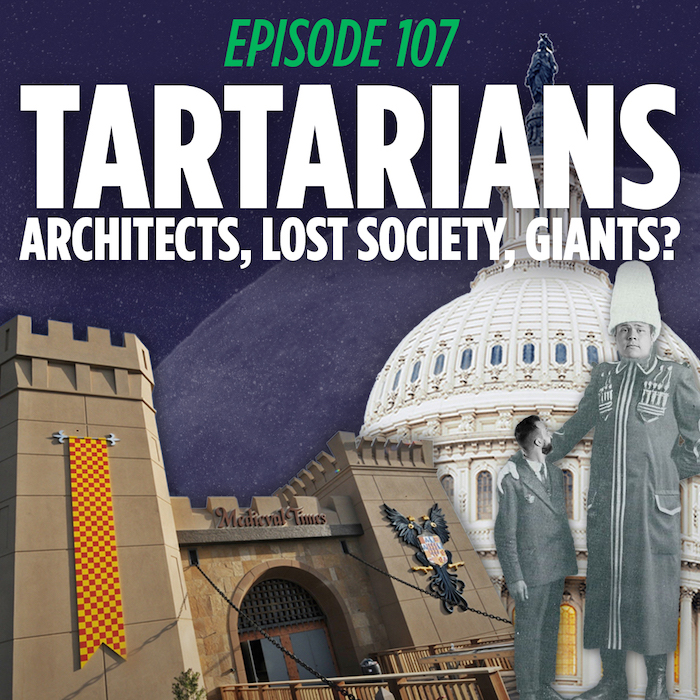The globe is dotted with beautiful columns and archways popularized by the Beaux-arts style of architecture. Beaux-arts caught on and took the world by storm, as with many trends. Or did it? According to a relatively new internet, conspiracy buildings in this style are relics from a long-lost empire known as Tartaria. Much of our nation’s capital buildings are really just repurposed Tartarian structures that were nearly destroyed by a worldwide mud flood. So, where do Tartarian truthers find the evidence for these extraordinary claims? Buckle up, and let’s find out the origins of the tremendous Tartarian Empire.
Evidence for a Forgotten Empire
First, we need to look at where this theory even came from. The basis for the existence of Tartaria is fourfold. First, Tartary was a blanket term for northern Asia, modern-day Russia, from the mid 13th century through the 19th century. Tartarian truthers point to this phrase as the remnant of society rather than a blanket term referring to multiple people groups. The mud flood is another critical piece of this theory. Believers in the Tartarian conspiracy point to the underground window wells and cellar entrances of buildings from the era, as mentioned earlier, and theorize that there must have been some worldwide flood of mud that partially buried all of these buildings.
The most significant evidence for Tartaria is the architectural styles known as Beaux-arts and Second Empire. These similar styles are reminiscent of ancient Roman architecture. However, they use modern techniques and materials to make the facades more majestic. The architecture was famous worldwide throughout the 19th century and early 20th century. Interestingly, immediately following these styles came a trend known as brutalism, in which buildings were built as entirely utilitarian structures that were often very bland. Tartarian truthers point to this dichotomy to say that our culture was not advanced enough to create the Beaux-arts style and instead repurposed these relics from an ancient society.
The last edge of the theory is formed by bending passages within the Christian Bible to fit the purposes of the theorists. These interpretations are relatively weak, but they help develop the more fantastical theory versions.
Layers of the Theory
There are several layers to the Tartarian myth. The first, almost universal layer, is that a mighty empire in northern Asia has been lost to time. The second layer is that this empire spanned the entire globe and established a one-world or near one-world government under its rule. Finally, the third layer is that this empire was not just global but advanced. They had technologies unlike anything we can imagine, and the architecture exhibited by the society showcases their mammoth abilities.
The most bizarre ends of the theory are the following two variations. They are more like parallel layers, so we’ll refer to them as layers 1a and 1b. Layer 1a is the theory that Jesus founded this society during the Millenial Reign of Christ described in the book of Revelation. They use a series of scriptures, along with the Tartarian theory and the widespread conspiracy that the middle ages never happened to formulate a 1000 year empire ruled by Jesus himself. We are currently living in the period after the reign of Christ, also described in the book of Revelation. Therefore, Satan himself is trying to keep the truth of Tartaria from us.
Layer 1b is almost equally farfetched. In this layer, Tartarian believers point to the vaulted ceilings in the buildings left over from Tartaria and conclude that their builders must have been giants. There is an ancient society of giants for believers in this layer that the world governments are actively attempting to cover up.
Covering Up Tartaria
Tartarian truthers point to a wide array of events as evidence of a cover-up campaign for the empire of Tartaria. Most wars in the late 19th century have been thought of as attempts to destroy much of the remaining architecture. Believers also look to the World’s Fairs of that same period and conclude that the impressive buildings erected for these events were not built. Instead, they were standing structures from Tartaria. The governments that were hoping to erase Tartaria from history designed the World’s Fair in such a way that would allow them to destroy these buildings without arousing suspicion.
Conclusion
The theory of Tartaria is certainly tantalizing. If it were true, it would call into question much of history and reshape the way we look at ourselves. However, much of the arguments for such a society are based on little evidence. Most of the proof given by believers is from twisted interpretations of the evidence that often ignores much more valid conclusions of said phenomena. As interesting as it would be to have had a technologically advanced race of giants that predated us, it just isn’t true. But then again, the government is paying us to say that.
Things I Learned Last Night is an educational comedy podcast where best friends Jaron Myers and Tim Stone talk about random topics and have fun all along the way. If you like learning, and laughing a whole lot while you do, then you’ll love TILLN. Watch or listen to this episode right now!
Sources
Related Episodes
Tell Us What You Think of This Content!
Don’t forget to share with your friends!

